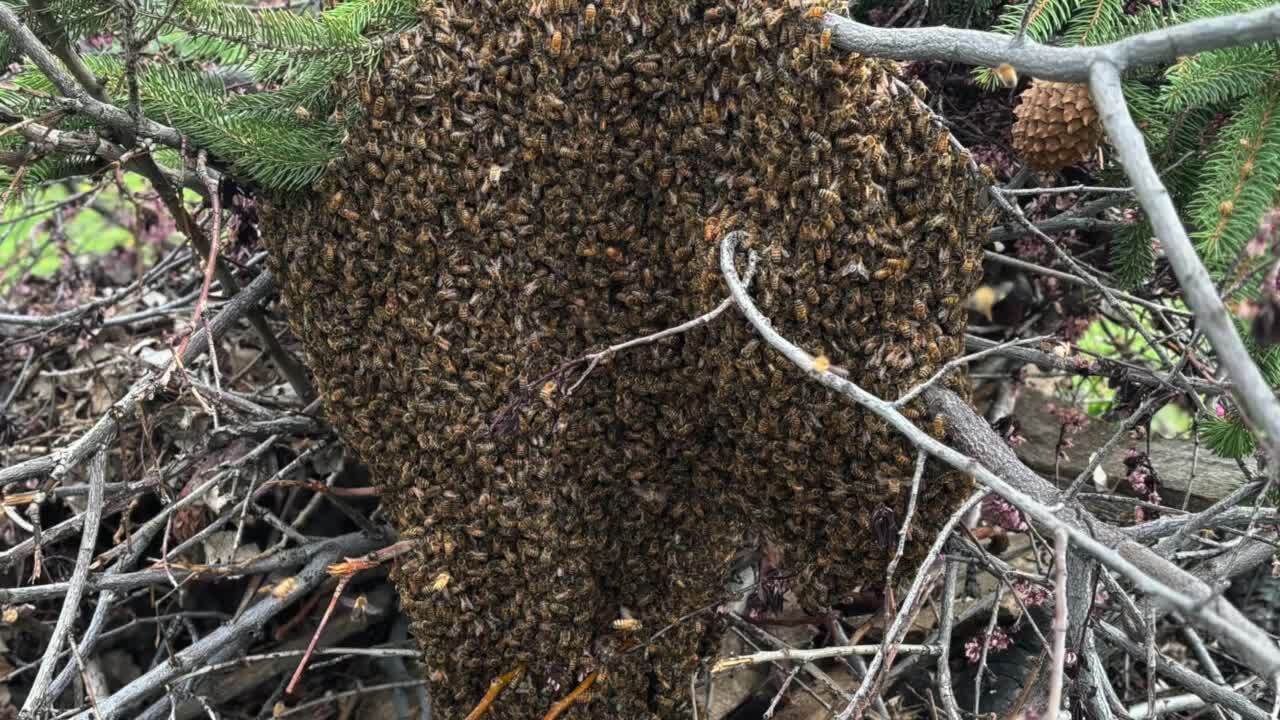EAGLE, IDAHO — Winter blooms into Spring bringing the bees out of their hives to start pollinating, causing massive swarms to appear as many bees search for a new home.
- Swarm season started in early March and will go through late July.
- The Treasure Valley Bee Keepers Club will come out to your home to take the swarm away.
- For more information on the club click here.
- You can also see the club's Facebook here.
(Below is the transcript from the broadcast story)
The buzz around town is that it's swarm season, but don't "bee" afraid! I'm your Eagle neighborhood reporter Alexander Huddleston and I met up with a couple of members of the Treasure Valley Bee Keepers Club to discuss what you can do if you hear a swarm.
"Bees are your friends. They are not yellow jackets. Yellow jackets are meat eaters, and you are on the menu," said beekeeper Jim McMahon.
As the flowers bloom, spring is not the only season starting. Bees begin leaving their hives for the swarming season.

Another beekeeper Garrett Hana explained, "Yeah we're in it right now. It starts in early March and ends kind of around late July. Colonies of bees are making it through the winter time and they are growing in population right now in the Spring. They are running out of room in their hive for this increase in population."
"So most people are going to see a football or basketball-shaped swarm. Often it will be hanging off a fence, off a tree limb," continued McMahon.
McMahon, a beekeeper based in Eagle told me about the important role bees play in our ecosystem.

McMahon said, "35-40 percent of everything we eat, especially if you go into the fruit or vegetable aisle, is made by bees. One thing we could do as human beings is consider the types of pesticides we are using on our plants, our lawns, and our things because those pesticides are threatening to the lives of those bees."
Hanna explained that when a swarm is spotted, to prevent harm to yourself or the bees, do not take matters into your own hands or the chemicals of a spray. Give a beekeeper a call so that they can remove it.
"I have the landowner send me a picture of the bees. Once we are sure they are honey bees, we come out to their house. We assess the area. Put our hive set-up boxes underneath the hive. We shake the bees into the box. They find their new home. As long as the queen goes in, the other bees will smell her and join in," listed Hanna.

Hanna finished, "That’s why the beekeepers want the bees, to keep them safe, and also we reap the benefit of the honey every year."
If you see a swarm you can contact the local beekeeper in your neighborhood using their website.



